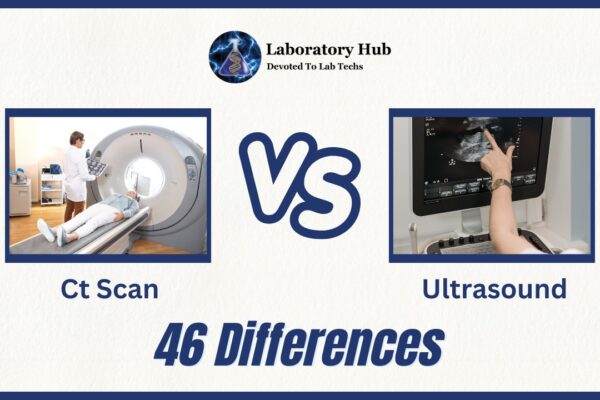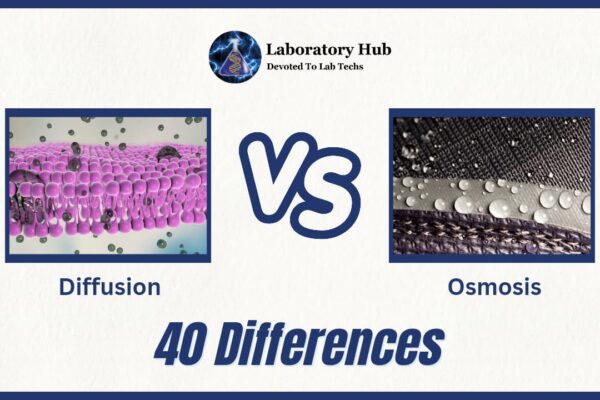O antigen vs H antigen – 25 Differences
Understanding immunity and generating effective vaccines requires studying antigens, important components of our immune system. O and H antigens are important. Gram-negative bacteria, especially Enterobacteriaceae, have lipopolysaccharide (LPS) with O and H antigens. O and H antigens have a structure, however, they differ in 25 ways.
O antigen, or somatic antigen, is a polysaccharide in LPS. It’s on the lipopolysaccharide’s outside. The O antigen classifies bacteria serologically by strain and species. It helps the host immune system recognize infections, and antibodies against the O antigen protect against infection. Bacteria are harmful and virulent because their O antigens vary
The H antigen, also known as the flagellar antigen, is a protein in certain bacteria’s flagella. Flagella propel bacterium. Flagellin protein in the H antigen helps bacteria migrate. The H antigen serotypes bacteria through flagellar antigens, unlike the O antigen. The H antigen, like the O antigen, is extremely changeable, enabling bacterial strain discrimination.
Let’s compare the O and H antigens’ 25 main differences. They differ in chemical composition, placement within the bacterial structure, serological categorization, immune system recognition, strain variability, and pathogenicity and motility. These characteristics help medical and microbiological researchers identify bacterial strains, generate vaccinations, and build targeted therapies.
Also read: Top 21 Difference Between Red Blood Cells And White Blood Cells (RBCs Vs. WBCs)
Gram-negative bacteria’s lipopolysaccharide structure relies on the O and H antigens. Both serve key roles in serological categorization and immunological recognition, but their distinctions contribute to their distinctive functions and properties. These 25 major variations will help us comprehend bacterial antigens and immunology and microbiology studies.
S.No. | Category | O Antigen | H Antigen |
1 | Location | Present in the outermost layer of the bacterial cell wall. | Found on the bacterial flagella. |
2 | Composition | Made up of repeating sugar units (oligosaccharides). | Composed of flagellin proteins. |
3 | Function | Protects bacteria from host immune responses. | Involved in bacterial motility and adhesion. |
4 | Variability | Highly variable among different bacterial strains. | Highly variable among different bacterial strains. |
5 | Immunogenicity | Immunogenic and elicits an immune response in the host. | Immunogenic and elicits an immune response in the host. |
6 | Antibody Response | Can induce the production of specific antibodies. | Can induce the production of specific antibodies. |
7 | Serotyping | Used in serotyping to distinguish different strains or subtypes of bacteria. | Used in serotyping to distinguish different strains or subtypes of bacteria. |
8 | Detection | Detected using serological tests, such as agglutination assays. | Detected using serological tests, such as agglutination assays. |
9 | Genes Involved | Encoded by genes in the O-antigen biosynthesis gene cluster. | Encoded by genes in the flagellar biosynthesis gene cluster. |
10 | Role in Pathogenesis | Can contribute to bacterial virulence and host colonization. | Can contribute to bacterial virulence and host colonization. |
11 | Antigenic Variation | May undergo antigenic variation to evade host immune responses. | May undergo antigenic variation to evade host immune responses. |
12 | Cross-Reactivity | Cross-reactivity may occur between closely related strains. | Cross-reactivity may occur between closely related strains. |
13 | Serogroups | Bacteria can be classified into different serogroups based on O antigen. | Bacteria can be classified into different serogroups based on H antigen. |
14 | Role in Vaccines | O antigens are important targets for vaccine development. | H antigens are not commonly targeted in vaccines. |
15 | Linkage to Lipopolysaccharides | O antigens are part of lipopolysaccharides (LPS) in Gram-negative bacteria. | H antigens are not linked to lipopolysaccharides. |
16 | Associated Diseases | O antigens are associated with specific bacterial diseases, e.g., typhoid fever caused by Salmonella typhi. | H antigens are not directly associated with specific diseases. |
17 | Heat Stability | O antigens are heat-stable and can withstand high temperatures. | H antigens are heat-labile and can be destroyed at high temperatures. |
18 | Biosynthesis | O antigens are synthesized through the Wzx/Wzy-dependent pathway. | H antigens are synthesized through the FlhDC/Flg pathway. |
19 | Role in Aggregation | O antigens contribute to bacterial aggregation and biofilm formation. | H antigens do not play a significant role in aggregation or biofilm formation. |
20 | Associated Disorders | O antigens are implicated in autoimmune disorders like Guillain-Barré syndrome. | H antigens are not directly implicated in autoimmune disorders. |
21 | Effect on Host Immune System | O antigens can trigger an immune response and contribute to bacterial clearance. | H antigens can trigger an immune response, leading to the production of specific antibodies. |
22 | Diagnostic Significance | O antigen detection is useful for identifying bacterial species or strains. | H antigen detection is useful for identifying bacterial species or strains. |
23 | Role in Colonization | O antigens facilitate bacterial adhesion and colonization of host tissues. | H antigens are crucial for bacterial motility and colonization. |
24 | Evolutionary Conservation | O antigens can vary significantly between different bacterial species. | H antigens can vary significantly between different bacterial species. |
25 | Role in Virulence | O antigens can contribute to the virulence of bacterial pathogens. | H antigens are involved in bacterial motility and may indirectly contribute to virulence. |
Frequently Asked Questions (FAQs):
Bacterial serology relies on O and H antigens. Gram-negative bacteria’s outer membranes contain the polysaccharide O antigen, which helps distinguish strains and species. Pathogen identification by the host immune system depends on it. Bacterial flagella contain the H antigen, a protein. It serotypes bacteria using flagellar antigens to identify and differentiate strains.
Polysaccharides—long sugar chains—make up the O antigen. Its variability makes bacterial strains dangerous and virulent. The H antigen contains flagellin, the structural protein of bacterial flagella. The O antigen contains polysaccharides, while the H antigen contains proteins.
The immune system distinguishes between O and H antigens. Protective immunity against bacterial infections relies on O antigen antibodies. The immune system preferentially attacks flagellar antigens because the H antigen is part of the bacterial flagella. These immune responses help identify and serotype bacteria.
O and H antigens vary widely across bacterial strains. Bacterial serotypes vary due to the O antigen’s wide variety. The H antigen is very variable, allowing flagellar antigens to distinguish bacterial strains. Variability helps identify and characterize bacteria strains and species.
O and H antigens affect bacterial pathogenicity and motility. Bacteria’s O antigen variability affects their pathogenicity and disease-causing potential. It affects the host’s immune response and helps germs hide. Bacteria migrate and colonize host habitats via the H antigen in flagella. Motility helps germs reach target areas and cause illnesses.







